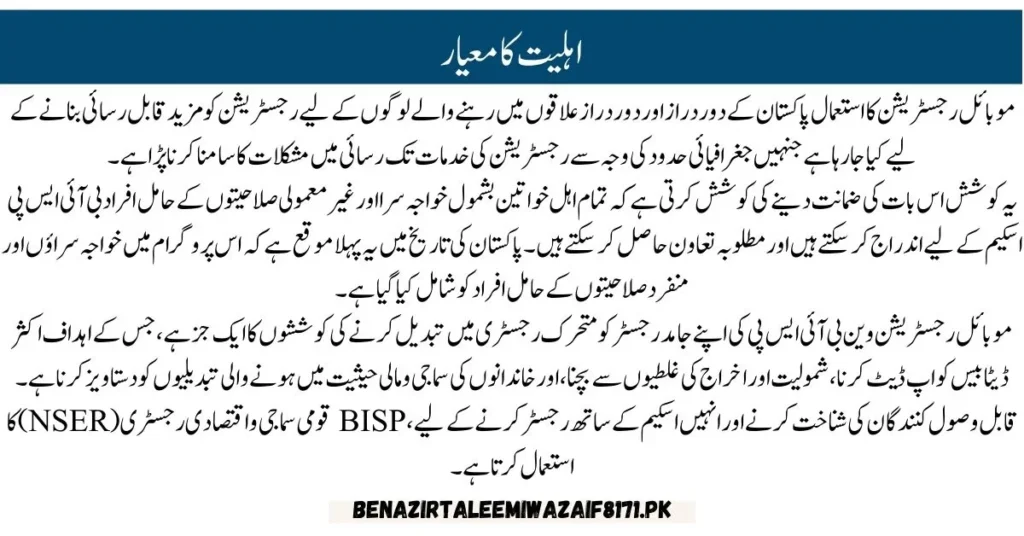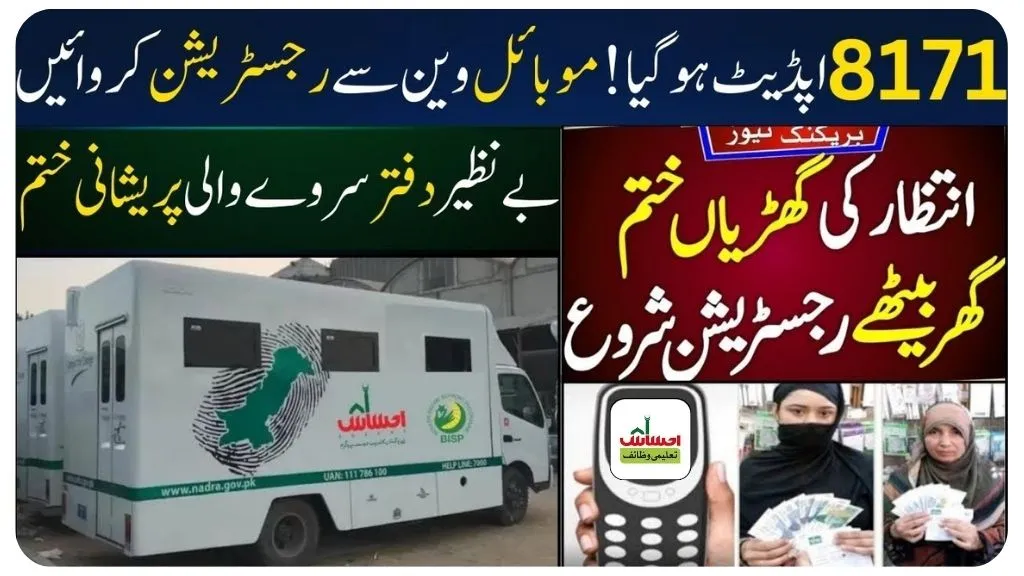The BISP Mobile Registration Van initiative represents an innovative approach to ensure that every eligible woman has access to social support, regardless of her location. Not only does it streamline the registration process, but it also underscores BISP’s unwavering commitment to social welfare and empowerment by offering immediate registration services to recipients.
Also Read: Benazir Kafalat Program: Now Offering Double Payments!
Documentation Requirements:
To register for BISP via Mobile Registration, the following documents are required:
- Validated Computerized National Identity Card (CNIC) of the original applicant by NADRA, serving as a unique identifier.
- A SIM card registered under the applicant’s CNIC for identity verification and communication purposes.
- Household information including CNIC and socio-economic details, used by BISP to assess program eligibility.
- In absence of a CNIC, a child can use a “Form-B” as a unique identity to be listed as a household member.

Eligibility Criteria:
The Mobile Registration initiative aims to facilitate registration for individuals residing in remote areas of Pakistan, addressing accessibility challenges faced due to geographic limitations.
The initiative ensures inclusivity by enabling all eligible women, including transgender individuals and those with disabilities, to register for the BISP scheme and receive necessary support, marking a historic inclusion in Pakistan’s welfare programs.
As part of BISP’s efforts to transition from a static to a dynamic registry, the Mobile Registration Van updates the database regularly, minimizing inclusion/exclusion errors and documenting changes in households’ socio-economic status.
BISP utilizes the National Socio-Economic Registry (NSER) to identify eligible recipients and register them for the scheme, following these steps:
- The eligible woman meeting BISP’s criteria can apply for the program by visiting the Mobile Registration Van.
- During registration, the applicant submits her CNIC and household details, including those of extended family members.
- BISP collects socio-economic data to conduct a Poverty Means Test (PMT) based on the NSER survey, determining the household’s poverty status.
- If the household meets eligibility criteria based on the PMT score, the eligible woman becomes the primary beneficiary of the BISP program, receiving monetary transfers on behalf of the entire household, recognizing her role as the family’s primary caretaker.
Conclusion:
The BISP Mobile Registration Van initiative represents a significant step towards enhancing accessibility and inclusivity in Pakistan’s welfare system. By streamlining the registration process and embracing historically marginalized groups, such as transgender individuals and those with disabilities, BISP reaffirms its commitment to social welfare and empowerment. Through the utilization of modern technology and a dynamic registry approach, BISP ensures that deserving individuals receive the support they need promptly and efficiently, contributing to poverty alleviation and societal development.
Also Read: Guidance for Applying for the BISP 8171 Card in 2024
FAQs:
- How does the Mobile Registration Van initiative benefit marginalized communities?
- The Mobile Registration Van initiative ensures that historically marginalized groups, including transgender individuals and those with disabilities, have equal access to BISP registration services. By bringing registration facilities closer to remote and distant areas, the initiative addresses geographic barriers and facilitates the inclusion of all eligible individuals in Pakistan’s welfare programs.
- How does BISP determine eligibility for its program?
- BISP utilizes a Poverty Means Test (PMT) based on data collected from the National Socio-Economic Registry (NSER) survey to determine eligibility for its program. This test assesses the socio-economic status of households, considering factors such as income, assets, and household composition. Eligibility is determined based on the PMT score obtained through this assessment.
- What role does the eligible woman play in the BISP program?
- The eligible woman in the household, meeting BISP’s criteria, becomes the primary beneficiary of the program if the household is enrolled and meets the eligibility requirements based on the PMT score. As the recognized primary caretaker, she receives monetary transfers on behalf of the entire household, ensuring that the support provided by BISP reaches those in need effectively and efficiently.

